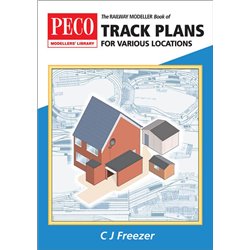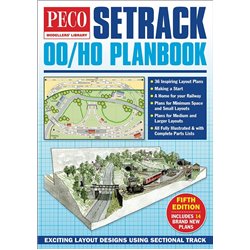There is no need to replace the bottle, it is more than likely a build-up of dry glue inside the nozzle. This is a...
No products
Product successfully added to your shopping cart
There are 0 items in your cart. There is 1 item in your cart.
Search Tips
Christmas and New Year
We are dispatching orders every weekday apart from Christmas Day, Boxing Day and New Year's Day.
If you order is time critical, select next day delivery at checkout.
The shop in Sandown is closed from 25th December, reopening on 30th December.
What different types of layout are there?
The most common layout types are: the continuous run, point to point, out and back, figure of eight and the dumb-bell or dog-bone as it is sometimes known.
The continuous run is pretty much self-explanatory. It can take any shape but is often a variation on an oval. The basic concept is that whatever shape the continuous run takes, the train departs from a given point and eventually ends up back at the same place, facing in the same direction and on the same track as it departed from. Continuous runs are often extended to cover as much of the baseboard as possible before returning back to the starting point. The main advantage of a continuous run is the simple wiring required to achieve it, the disadvantage is that the same train keeps appearing in the same direction every couple of minutes or less which may be an issue if realism is an important factor.
A good solution to this problem is to install a fiddle yard (series of sidings usually off scene) at some point along the run so that trains can be substituted and operate a little bit like contestants in a relay race.
There is generally no specific focal point on a continuous run layout with most of the run likely to be of interest to the viewer and operator.
Point to point layouts consume much less space and are probably the most simple type of layout, in their most basic guise they are one piece of track running from a fiddle yard at one end, to a focal point at the other.
The focal point is usually a destination of some description such as a station, goods yard or engine shed. These models (apart from their space-saving benefits) are ideally suited to modellers that want to incorporate extremely high levels of detail into their layouts, as to do this with a large baseboard would likely take decades to complete.
Out and back is in some ways a little like a point to point layout in the respect that there's a destination (or focal point) at one end. The difference being that this is the only terminus on the layout, once the train departs, it makes its way to a loop and then returns back to the starting point from the opposite direction. Usually a fiddle yard would be located somewhere in the loop so that trains can be substituted and you do not receive the same train that departed just moments earlier. The advantage of this kind of layout is the lack of necessity to change the direction of the trains at both ends of the layout providing that your fiddle yard is big enough to accommodate several trains for a reasonable period of time before they return to the station.
Out and back layouts are generally bigger than point points and often have an extended focal point. This, however, is just coincidence as there is no rule saying that point to point layouts have to be small in nature.
Dumb-bell or Dog-bone layouts as they are sometimes known are two out and back layouts stuck together which effectively gives the trains a continuous run, the difference being the focal point. A continuous run layout will typically follow the perimeter of a room (or baseboard if smaller) with the viewer following the trains around it. The idea of a dumb-bell is that you have one big central focal point in the middle, akin to out and backs, trains will depart and traverse the loop returning to the focal point, this time, however, the train can continue straight through to a loop at the other end before returning back to the starting point for a second time, as with the other types of layout trains would be substituted along the way in fiddle yards located on both of the loops.
Figure of eights are a beast all on their own and very rarely actually look like a number 8, the principle behind them is that they are a continuous run that crosses over itself before returning to the starting point. This type of layout often cover both upper and lower levels so tracks will cross using a bridge bringing great scenic advantages to layouts.
These layouts also tend to make the best use of space when utilising a spare room for a layout because they spread out into the corners of the room whilst leaving a recess along a perimeter wall for the operator. This spares them the inconvenience of climbing under the layout into the centre of the room every time a quick running session calls as you would have to do if the baseboard simply followed the outside walls of the room.
Don't forget that when planning your layout, you do not have to follow any of the more usual layout types. You can mix and match different types. For example, you could easily have an out and back that follows the figure-eight principles.
Our top tip though is: do your research when sketching your layout. The main area to take advice on is wiring your layout especially with out and backs. The problem area with these is when you start installing points to connect your out-track and your back-track, your trains will not mind going out and coming back but electricity does and without the installation of appropriate circuitry for such a layout you will get a short circuit.
Click here to receive the tips weekly in your mailbox. You can unsubscribe at any time.










